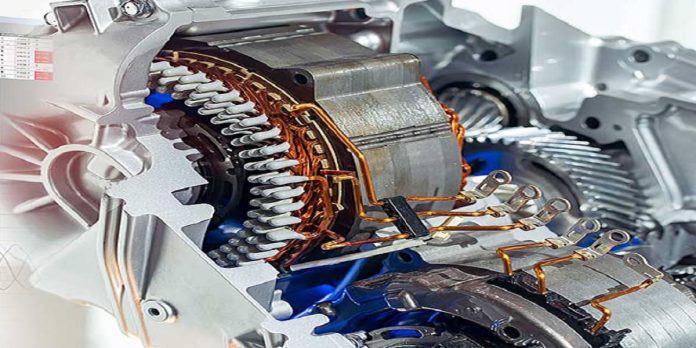The evaluation of electric vehicle motors is based on many factors. Mainly, it is based on three factors- durability, performance, and reliability of an electric vehicle motor.
The evaluation system for the assessment of an electric vehicle’s motor simulates the real-world driving conditions. It measures and records vital parameters such as speed, torque, power, and temperature.
Thereafter, the data collected by the evaluation system is used to identify key areas of improvement in the performance of an electric vehicle’s motor.
The key parameters on which an electric vehicle’s motor is evaluated are as follows:
First, constant load testing. In this testing method, a fixed load is applied to an electric vehicle’s motor for a constant time period. This load can be set to a predetermined value. And then, it records the motor’s performance in terms of its temperature, torque, speed, and power consumption.
Second, real-time DC- A real-time DC is built to assess the effectiveness of different energy management controllers in a variety of road conditions.
Third, EVREVO. This testing method evaluates any evaluation software without waiting for the other vehicle parts to be installed on it.
Fourth, EV motor test systems. This test system simulates the driving conditions prevailing on roads. This aid the driver to hone his/ her driving skills pertaining to different parameters. For instance, acceleration, deceleration, and other road and load conditions.
Thereafter, the data collected from these sources is used to identify areas of improvement in the performance and design of an electric vehicle.
Fifth, input voltage control. The allowed voltage range should be selected before the test, and each test point should work as quickly as possible.
Sixth, efficiency maps. They are installed in an electric vehicle’s simulation model. It gives vital inputs about the performance of an electric vehicle’s motor, battery, and other components.
Seventh, simulation calculation. It can be used to derive the distribution of operating points under different conditions. This can help to match the motor system to the whole vehicle and get a more accurate efficiency performance.
Eight, analytical hierarchy process (AHP). It is used to quantitatively measure the relative performance of different types of batteries. For example, lithium-ion batteries, fuel cells, and hybrid batteries.
Ninth, airgap eccentricity. It detects any major defect that may occur in any variable speed induction motor.
Tenth, input voltage control. It maintains a specific voltage range at each point of an electric vehicle’s motor.
Eleventh, step load testing. In this method, a specific load is applied in incremental steps to an electric vehicle’s motor. Thereafter, the response of that motor is monitored at each load level. This enables to assess the ability of that motor to handle increasing loads without any decrease in performance or overheating. This helps to determine that motor’s load capacity and performance under different conditions.
Twelfth, peak load testing. It is undertaken to evaluate an electric vehicle’s motor’s ability to withstand any sudden high loads or short bursts of power demand. In this method, that motor is subjected to its maximum rated load or slightly higher than that limit for a brief period of time. This helps to assess that motor’s ability to withstand any such spurt in peak load without overheating or failing.
Thirteenth, endurance testing. In this method, a load is continuously applied to an electric vehicle’s motor for a prolonged period. This type of testing helps to evaluate that motor’s reliability, durability, and thermal performance under prolonged operating conditions.
Fourteenth, regenerative load testing. In this method, an electric vehicle’s motor is subjected to variable loads in regenerative mode. This helps to evaluate its efficiency in both recovering and converting kinetic energy into electrical energy during the process of deceleration.
Fifteenth, thermal load testing. It is aimed at assessing an electric vehicle’s motor’s thermal management system. In this method, a motor is operated under heavy loads or at maximum power for an extended period. During this process, its change in temperature is monitored. Hence, this testing helps in determining the effectiveness of that motor’s cooling system so that it can maintain an optimal operating range of temperature.









